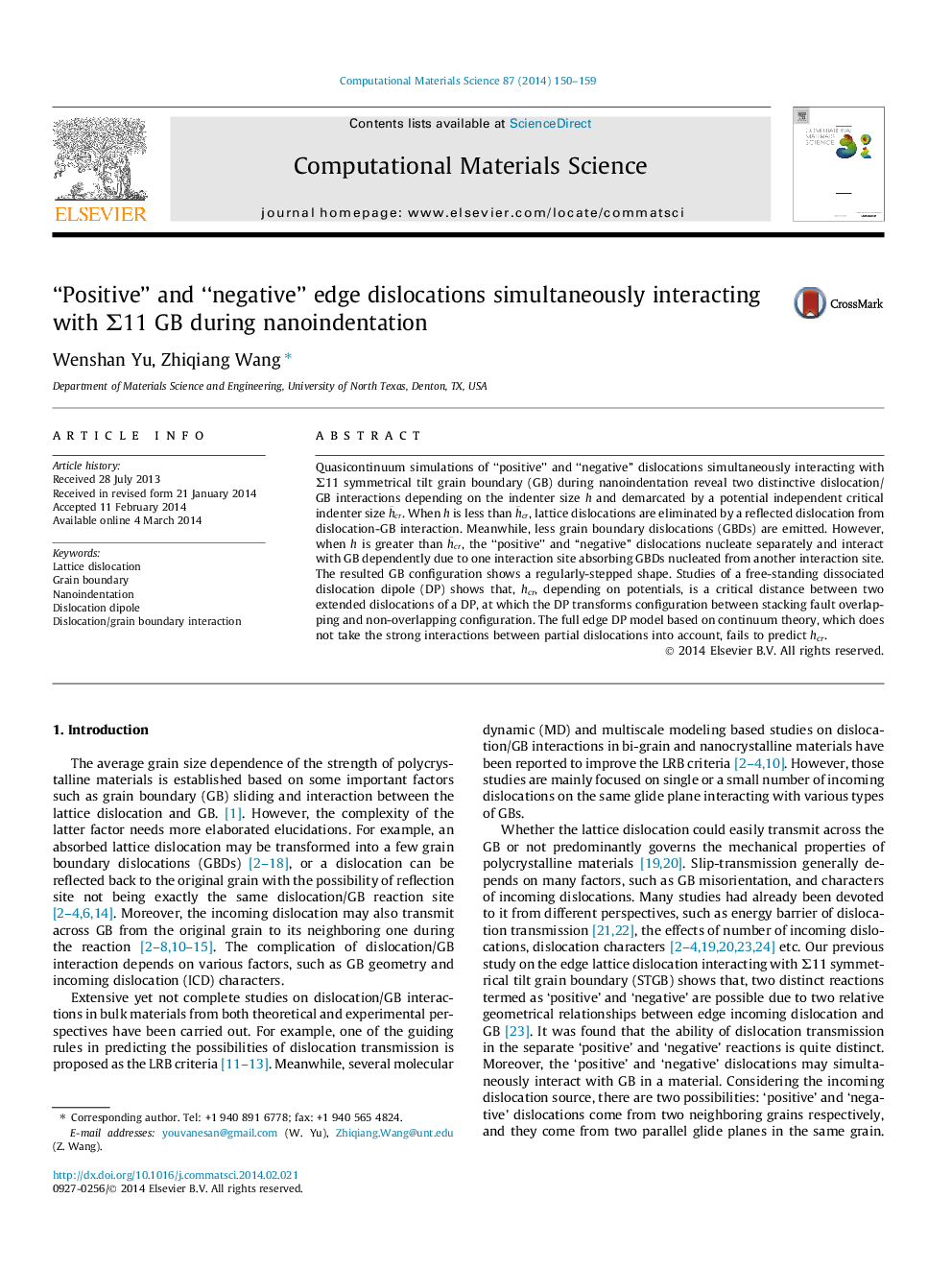| Article ID | Journal | Published Year | Pages | File Type |
|---|---|---|---|---|
| 1560553 | Computational Materials Science | 2014 | 10 Pages |
Abstract
Quasicontinuum simulations of “positive” and “negative” dislocations simultaneously interacting with Σ11 symmetrical tilt grain boundary (GB) during nanoindentation reveal two distinctive dislocation/GB interactions depending on the indenter size h and demarcated by a potential independent critical indenter size h¯cr. When h is less than h¯cr, lattice dislocations are eliminated by a reflected dislocation from dislocation-GB interaction. Meanwhile, less grain boundary dislocations (GBDs) are emitted. However, when h is greater than h¯cr, the “positive” and “negative” dislocations nucleate separately and interact with GB dependently due to one interaction site absorbing GBDs nucleated from another interaction site. The resulted GB configuration shows a regularly-stepped shape. Studies of a free-standing dissociated dislocation dipole (DP) shows that, hcr, depending on potentials, is a critical distance between two extended dislocations of a DP, at which the DP transforms configuration between stacking fault overlapping and non-overlapping configuration. The full edge DP model based on continuum theory, which does not take the strong interactions between partial dislocations into account, fails to predict hcr.
Related Topics
Physical Sciences and Engineering
Engineering
Computational Mechanics
Authors
Wenshan Yu, Zhiqiang Wang,
